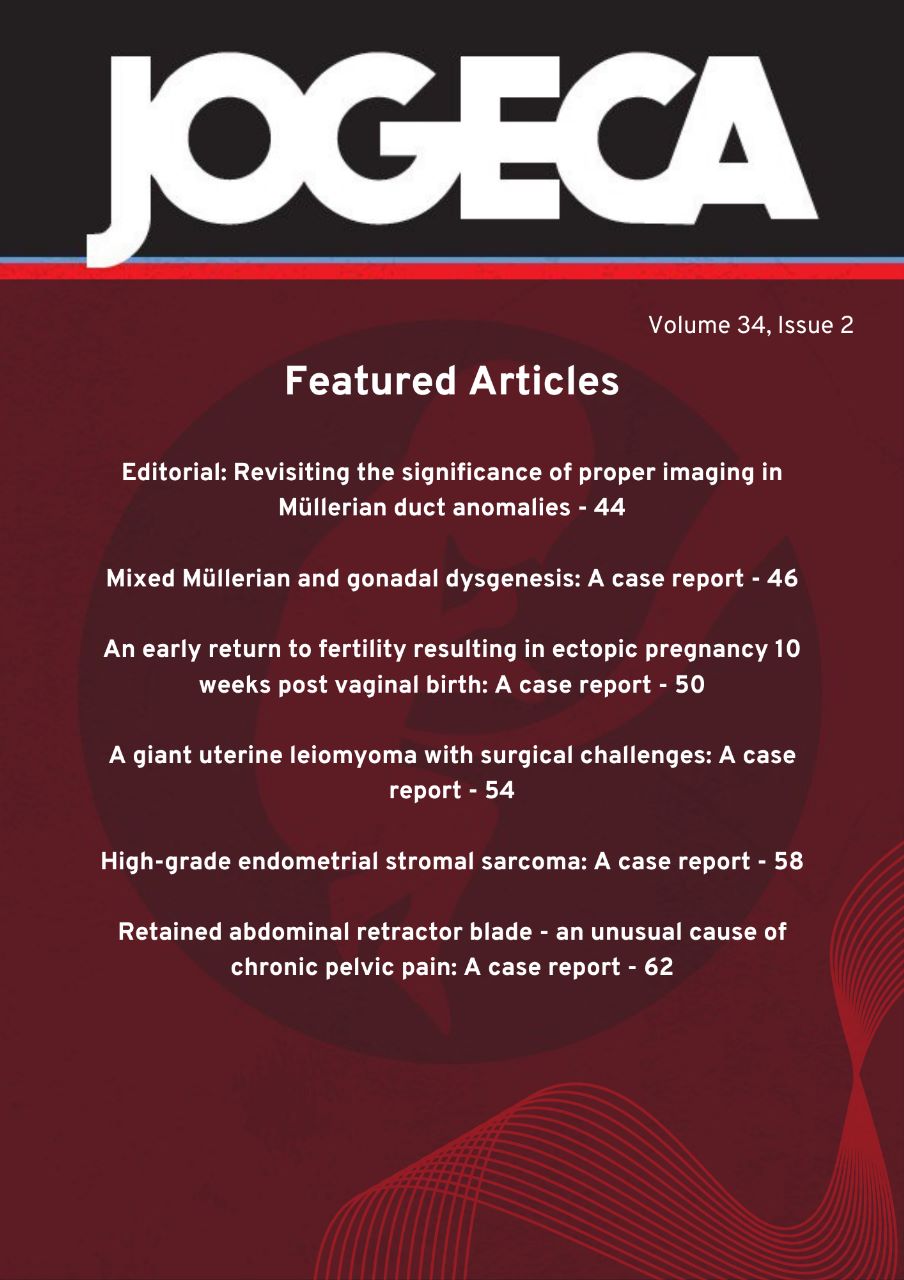Management challenges for Gestational Trophoblastic Neoplasia in a 54 years old perimenopausal woman ; A case report.
DOI:
https://doi.org/10.59692/jogeca.v36i1.166Keywords:
GTN, perimenopausal, management, challengesAbstract
Background: Gestational trophoblastic diseases (GTD) are pregnancy-related disorders that originate from trophoblast cells. They include benign and aggressive tumors, such as invasive moles, choriocarcinomas, placental site trophoblastic tumors, and epithelioid trophoblastic tumors. Gestational trophoblastic neoplasia (GTN) mostly occur in women of reproductive age, whereas it is extremely rare in postmenopausal women.
Case presentation: A 54-year-old woman presented with prolonged bleeding, abdominal fullness, and pelvic mass with a history of a missed abortion two months prior to the onset of the symptoms and was medically managed. Her general and systemic examination findings were unremarkable. On abdominal examination, the uterus was 14 weeks in size. On speculum examination, the cervix and vagina were normal. On bimanual examination, the uterus was 14 weeks, mobile, and the adnexa were normal. Investigations included serum beta-human chorionic gonadotropin (hCG), abdominopelvic magnetic resonance imaging, and chest computed tomography. Her initial hCG was 179,000 mIu/ml with a bulky uterus and endometrial mass of approximately 6 cm and multiple bilateral chest metastatic nodules. The patient was scored as stage III:10 and started on etoposide, methotrexate, actinomycin alternating with cyclophosphamide, and vincristine (EMACO). She received 11 cycles of EMACO. Her management included repeated transfusions, granulocyte-stimulating factors administration, and ICU admission.
Discussion: Gestational trophoblastic neoplasia accounts for rare gynecological malignancies in postmenopausal women. The risk of GTD progressing to GTN is 5% in younger women and five-fold higher (27%) after 45 years.
Conclusion: GTN is a rare gynecological malignancy in postmenopausal women. The presentation mimics other gynecological malignancies. Hence, a high index of suspicion is required. Histopathological confirmation is mostly unavailable. It carries a poor prognosis compared with younger women with a high incidence of metastatic, recurrent, and low tolerance to standard multi-agent chemotherapeutic drugs.
Downloads
Published
How to Cite
Issue
Section
Categories
License
Copyright (c) 2024 The Authors.

This work is licensed under a Creative Commons Attribution 4.0 International License.




